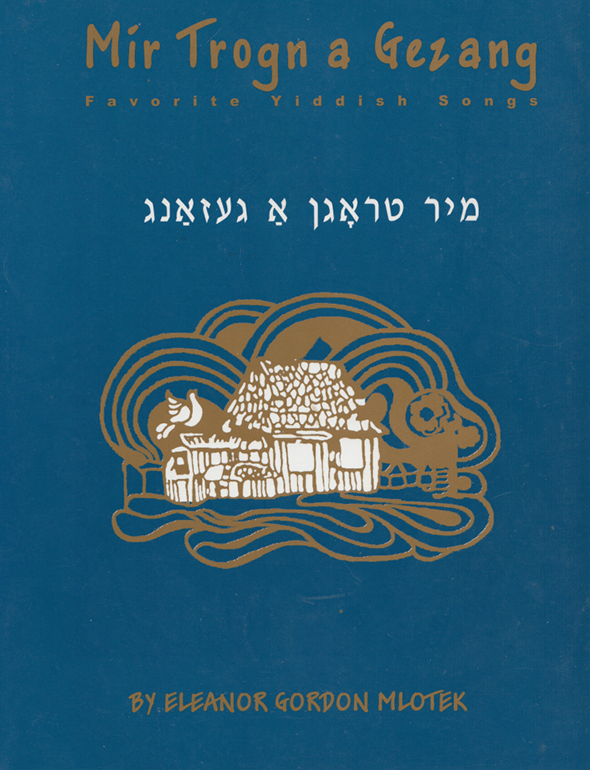Folk song. Text published by Ginzburg and Marek in 1901; text and music published by the St. Petersburg Society for Jewish Folk Music in 1909. The theme of the bitter and harsh treatment of a young bride by her in-laws is a popular one in the Yiddish folk song. The golden peacock became the poetic symbol of the Yiddish folk song, carrying messages and greetings from loved ones. The theme was adopted by such modern Yiddish poets as M.L. Halpern, Itsik Manger and others.

The golden peacock comes flying
from a foreign land,
she has lost her golden feather
to her great shame.
It’s not so much the golden feather,
as the peacock herself,
It is not so much the son-in-law
as the daughter herself.
As bitter as it is, my dear mother,
to be a bird at sea,
that’s how bitter it is, my dear mother,
to live with a bad husband.
As bitter as it is, my dear mother,
to be a bird without a nest,
that’s how bitter it is, my dear mother,
to be dependent on my in-laws.
Es kumt tsu flien di goldene pave
Fun a fremdn land,
Hot zi farloyrn dem gildenem feder
Mit a groysn shand.
S’iz nisht azoy der gildener feder,
Vi di pave aleyn,
Es iz nisht azoy der eydem
Vi di tokhter aleyn.
Vi es iz biter, mayn libe muter,
A feygele oyf dem yam,
Azoy iz biter, mayn libe muter,
Bay a shlekhtn man.
Vi es iz biter, mayn libe muter,
A feygele on a nest,
Azoy iz biter, mayn libe muter,
Shver un shvigers kest.
עס קומט צו פֿליִען די גאָלדענע פּאַװע
פֿון אַ פֿרעמדן לאַנד.
האָט זי פֿאַרלױרן דעם גילדענעם פֿעדער
מיט אַ גרױסן שאַנד.
ס’איז ניט אַזױ דער גילדענער פֿעדער,
װי די פּאַװע אלײן,
עם איז נישט אַזױ דער אײדעם
װי די טאַכטער אלײן.
— װי עס איז ביטער, מײַן ליבע מוטער,
אַ פֿײגעלע אױיף דעס ים,
אַזױ איז ביטער, מײַן ליבע מוטער,
בײַ א שלעכטן מאַן.
װי עס איז ביטער, מײַן ליבע מוטער,
א פֿײגעלע אָן א נעסט,
אַזױ איז ביטער, מײַן ליבע מוטער,
שװער און שװיגערם קעסט.
Song Title: Di Goldene Pave

First published in 1972, Mir Trogn A Gezang: Favorite Yiddish Songs was reprinted six more times (in 1977, 1982, 1985, 1987, 1988, 2000) due to popular demand. The songs in this anthology represent a sampling of beloved folk and well-known Yiddish songs, many of which are scattered in various song collections; some appear in very rare and inaccessible collections; and some were never before published. Folk songs comprise about a third of this volume and were selected mainly on the basis of popularity and sometimes for their historic significance. Needless to say, they are only representative of the vast, rich treasure of Yiddish folk material. The selection was made not only on the basis of personal preference, but in the knowledge they are favorites of many who sing these songs. Most of the songs represent the repertoire that was sung at Yiddish summer camps, May 1st demonstrations and at social gatherings. Many songs were introduced to American Jewry by Jewish immigrants who came to the United States after World War II, for whom these songs had been favorites in Poland and other East European communities destroyed by the Nazis.